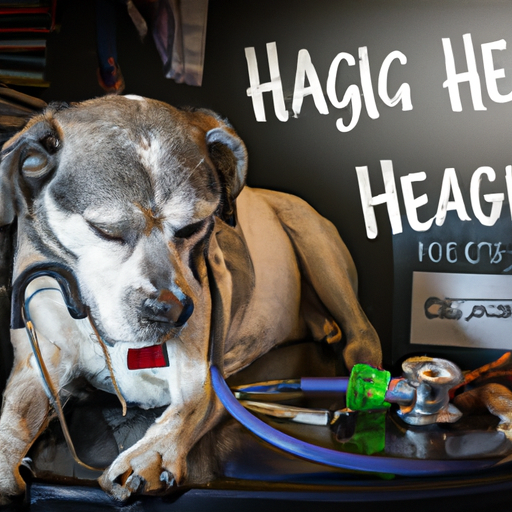1. Understanding Canine Bloat
Canine bloat, or Gastric Dilatation-Volvulus (GDV), is a serious health concern that can affect your beloved furry friend. It’s a condition where your dog’s stomach fills with gas and often twists, potentially leading to life-threatening complications.
As a caregiver, you’re the first line of defense for your pet’s health. Understanding the signs of bloat can provide your pooch with rapid relief and possibly save their life.
2. Recognizing the Symptoms of Bloat
Getting to grips with the symptoms of bloat requires vigilance. You need to know your dog’s normal behaviour so you can spot when something’s off. Here are a few signs that may indicate bloat:
- Distended abdomen: Your dog’s belly may appear swollen or ‘bloated’.
- Unsuccessful vomiting: Dogs with bloat often retch or attempt to vomit without bringing anything up.
- Restlessness: Your dog may pace or seem unable to get comfortable.
- Rapid shallow breathing: If your dog’s breathing becomes laboured, it’s a warning sign.
- Excessive drooling: This could indicate discomfort or pain.
3. Risk Factors for Canine Bloat
Certain breeds are more prone to bloat than others, typically large breeds with deep chests. However, any dog can experience bloat. Here are some risk factors to be aware of:
- Breed: Great Danes, Saint Bernards, Weimaraners, Irish Setters, and Standard Poodles are among the most susceptible.
- Age: Bloat is more common in older dogs.
- Eating Habits: Dogs that eat rapidly, consume one large meal a day, or have a history of gastrointestinal issues are more vulnerable.
4. Preventing Bloat in Dogs
While we can’t eliminate the risk entirely, there are steps you can take to minimize it:
- Split your dog’s daily food intake into multiple smaller meals.
- Avoid vigorous exercise immediately before and after meals.
- Keep a close eye on your dog’s behaviour and health.
5. What to Do If You Suspect Bloat
If you notice the signs of bloat in your dog, it’s crucial to act quickly. Here’s what you should do:
- Don’t try to resolve the issue at home. Bloat requires immediate professional care.
- Take your dog to the vet or an emergency pet hospital immediately. Time is of the essence in these situations.
FAQ Section
Q: Can small breed dogs suffer from bloat?
A: Yes, while it’s more common in larger breeds, any dog can suffer from bloat.
Q: Is bloat a medical emergency?
A: Yes, if you suspect your dog has bloat, seek veterinary help immediately.
Q: Can exercise cause bloat?
A: Vigorous exercise before or after meals can contribute to bloat, but it’s not the sole cause.
Q: Are there surgeries to prevent bloat?
A: Yes, a procedure called gastropexy can help prevent bloat in high-risk dogs. Discuss this with your vet.
Remember, you are your pet’s first line of defense. Stay vigilant, know the symptoms, and act promptly to protect your dog from this serious condition.



